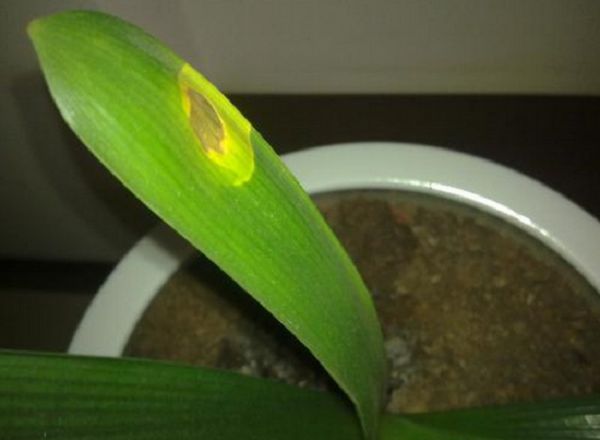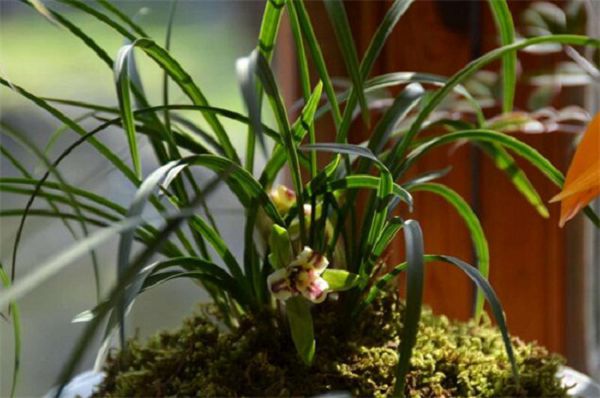What is the effect of light on the growth of orchids?
Light is not only a source of energy for orchids to produce nutrients, but also a necessary condition for the formation of chlorophyll. Orchids are affected by light everywhere from the basic physiological processes such as the formation of chloroplast, the opening and closing of stomata, the absorption of nutrients and water, the proliferation of cytoplasm, the formation of flower buds, the production of organic matter and the production of honey and fragrance.
When the temperature is 20: 25 ℃, the sun irradiates directly, and the chemical reaction between chlorophyll and light is very fast. More than 30 ℃, the chlorophyll of grass leaves will automatically reduce, the color of leaves will become lighter, and gradually form a gray visible film to reflect sunlight to prevent burns. This situation can only be maintained for a short time, for a long time, start from the tip of the orchid leaf, the whole plant gradually withered, especially the old grass first turned yellow, and then scorched. Under 20 ℃, orchid leaves can also automatically adjust the amount of chlorophyll to increase chlorophyll to absorb more sunlight, so as to absorb more carbon dioxide and ensure the nutrients needed for the growth of orchid bodies. This function is formed by orchids growing under trees, forests and grasses for many years. Therefore, orchids are not only Yang-tolerant, but also yin-tolerant. The fine leaves of orchids can withstand the high temperature of 45 ℃ for a short time and scorch leaves for a long time under the condition of sunshade. When there is sunshine, it can withstand minus 5 in the short term. The low temperature of C, but humidity is an important condition.
Orchids are shady and can grow at low temperatures, but they need all-day sunshine in winter. In terms of cultivation and management, shading measures are mostly taken in summer, and orchid pots can be put outside to see the light in the daylight, and can also be kept indoors when it is more than 30 ℃. Although the scattered light in the room is weak, orchids can be cultivated well. On the other hand, the orchids on the south balcony can be shaded by bamboo curtains and black shading nets sold on the market from 9: 00 a.m. to 5: 00 p.m., under well-ventilated conditions, as well as various sheds. When shading, should not cover the curtain net on the bluegrass, lest the curtain net be scalded by heat. Shading equipment had better have sparse light through, about 30% of the light is good for bluegrass. Light can not only increase temperature, but also prevent the growth of fungi, bacteria and viruses. There is a gap in the curtain net, which is conducive to ultraviolet rays killing germs and viruses.
Light has a great effect on the reproduction of orchids. If there is no sunshine for a long time in winter and the temperature is low, winter buds will not be nurtured, and if there is no new grass in spring, it will affect the rate of increasing grass throughout the year.
(1) different varieties of orchids have different requirements for light conditions, such as Chunlan and Huilan need strong light, Jianlan, Mulan and Hanlan need weak light. The same variety of orchids have different requirements for light in different seasons and different growth stages, such as dawn, astigmatism, weak light in summer and autumn, avoid direct sunlight, prevent sunburn, and the temperature is too high, which will lead to orchid plant diapause, there are not many photosynthates, there are not enough nutrients, and the number of "flower primordia" is small, which can not form flower buds. On the contrary, if the shade is too dense, the scattered light is too little, the intensity of photosynthesis is low, and it can not meet the needs of the formation and development of "flower primordium", it will affect flowering; strong light can be given for 6-8 hours at the end of autumn to promote flower bud differentiation and enrich its own growth nutrients; in winter, it should be placed in a place with strong light.
(2) when the orchid is full of shade, the leaves are long, dark green and thin, and the flowers are sparse, and there is no fragrance in flowering; under light intensity, the leaves are short, yellow and old, and the buds of arrow leaves can be burnt.
(3) avoid direct sunlight when the flower thunder breaks the bud, the calyx is exposed and the petals are open, otherwise the petals are easy to burn or the color is yellowing, and the flower wrinkles and does not stretch; if there is no light or insufficient light before flowering, the flower color is not beautiful.
(4) Orchid likes scattered light and is afraid of direct strong light. Scattered light has sufficient energy for photosynthesis, which can accumulate organic matter and facilitate the formation of "flower primordia".
(5) taller shade tree species should be planted around the orchid nursery, and their leaves and branches should be used to shade orchids, and when orchids need a lot of light, it is the time when their branches and leaves gradually fall. The orchid shed must be built into a shade shed that can be freely adjusted and can be opened sooner or later, so as to adjust the light transmission needed for the growth of orchids, create dawn in the morning, scattered light at noon, sun shelter in the afternoon, weak light in the evening, rain and dew at night, at least 2-4 hours a day, suitable for light, and 40% transparency, then the germination rate, flowering rate, leaf growth and leaf color of the orchid will be in an ideal state.
Related
- Is the orchid suitable for indoor use? Is it good for the body?
- How to prevent the empty root of orchids?
- What to do after the crab claw orchid is withered?
- Why are the leaves of orchids always yellow? Fertilizing and watering.
- Can the root of the gentleman orchid be saved if it is rotten?
- Diagnosis and treatment of cotton-blowing beetle insects in Cymbidium
- There is a way for a gentleman's orchid to rot.
- What is the most suitable temperature and humidity for the orchid?
- How to raise a gentleman's orchid? Cultivation techniques of Cymbidium
- How to prepare the nutritive soil for the cultivation of Cymbidium



